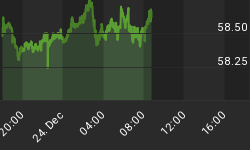Even though we have "statistically" been in a recovery for several years, it certainly may not feel that way for many. What follows is an excerpt from my upcoming book, a new release of E$caping Oz, where I discuss one of the fundamental problems in our economy and how the recovery feels for some Americans.
Our journey to Oz began long ago when we started manipulating the most important economic good, money. Yes, money is an economic good though society has forgotten. The definition of money changed. We forgot how to produce and save. We became addicted to credit. The wealth that so many thought they had was illusory. For many people that realization began in 2007 when the stock and real estate markets were crushed like the Wicked Witch of the East. Investors realized that wealth was not the perceived equity in a home nor was it the paper gains in the stock market.
Many feel, and simply are, poorer. The median household income was $51,681 in 1989 when measured in 2014 dollars. In 2012, three years after the end of the recession, that figure was $51,017. As a 2010 study from the U.S. Department of Commerce said,
"It is more difficult now than in the past for many people to achieve middle class status because prices for certain key goods -- health care, college and housing -- have gone up faster than income."
The middle class comprises 60-70% of all Americans. The number of food stamp recipients equals about 15% of the population comprising Americans considered poor. There are probably another 5-10% that subsist just above the poor level. This leaves anywhere from 10-20% of the population who are in the upper tier, though they may not consider themselves wealthy.
In engineering design, the term "factor of safety" describes how much stronger a system is than it needs to be for an intended load. The factor of safety for the middle class is razor thin. More discouraging is an economic recovery where median household income dropped - the first in history. It is easy to understand why the recovery does not feel that way for many. For the upper tier of the upper tier, the fabled 1%, the economic recovery is going quite well.
In fact, they are doing so well that artist Rober Gober recently sold his masterpiece, entitled Three Urinals, for $3.52 million. In case you were wondering, this is not a painting depicting three urinals, it is literally three urinals hung on a wall. Oh and the urinals are not functional, which in the opinion of the auctioneer was good since "smooth contours invite the viewer's touch". When such art can sell for multiple millions, there is definitely a bunch of money burning a hole in someone's pocket. But there is a reason for this burning sensation that we will explore.















